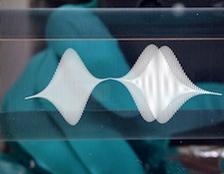Probing Ultrafast Photoreactions with Brilliant Light
Understanding and control of light-induced dynamics in complex molecular systems is one of the great challenges in ultrafast laser science. In many cases, the unambiguous data interpretation of traditional ultrafast optical spectroscopy is difficult because spectral features of reaction intermediates co-exist in time and overlap in frequency with those of the reaction products. Here, the power of state-of the-art table-top high-harmonic generation (HHG) and accelerator-based free-electron laser (FEL) light sources synchronized to optical lasers come into play. The photon energy can be tuned to innershell resonances, thus providing element specific information on laser-induced reaction dynamics coupled to the initially excited valence electron cloud.
The X-ray Femtochemistry team investigates photoinduced electronic and geometric changes of complex molecules and clusters. The response of the polyatomic system on external stimuli is observed and manipulated with ultrafast electromagnetic waves in a broad spectral range from X-rays to microwaves accessing inner shell resonances as well as low-frequency excitations in the electronic ground state. Our experimental investigations are flanked by advanced theoretical modeling performed by collaborating partners in order to achieve maximum synergy and output. We combine state-of-the-art methods in nonlinear optics (pulse shaping, coherent control and ultrashort pulse spectroscopy) with dynamic imaging of reaction products (photons, electrons and ions) to follow and possibly control excitation, bond breaking and formation, ionization and fragmentation under natural and extreme conditions directly in space and time.
Last but not least, the development of novel methodologies and enabling technologies for cutting-edge research applications are important aspects of our work. Recently, an experimental scheme originally invented for time-domain interferometry in the far-infrared spectral range was successfully transferred to XUV frequencies. Two interleaved gratings as shown below split the wavefront of an incoming pulse uniformly across the beam profile providing two pulse replicas with variable delay. It enables to record phase-sensitive autocorrelation traces with maximum contrast and attosecond precision.






